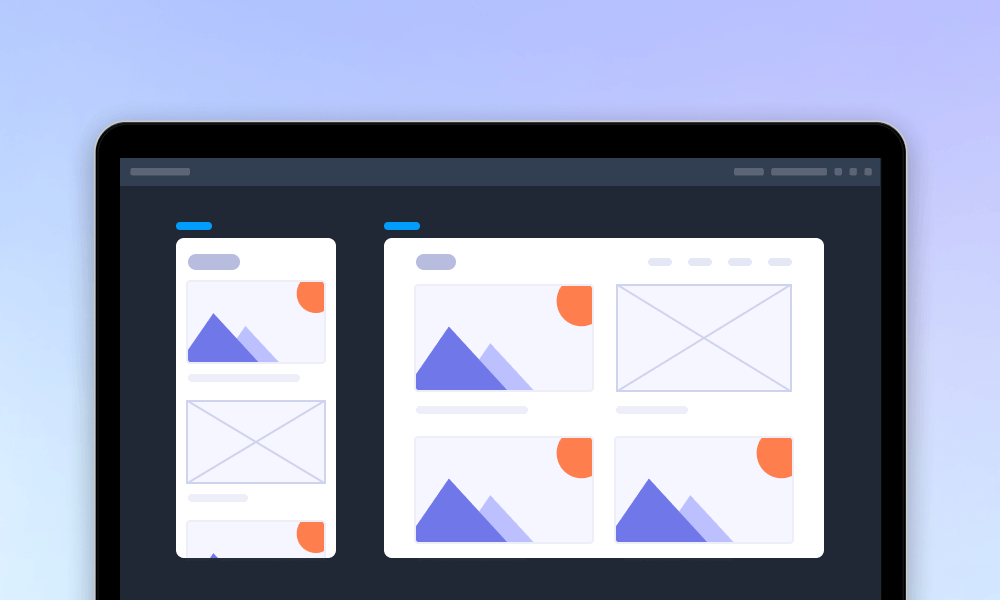Since ChatGPT burst onto the scene and go viral all over the world in 2023, the landscape of AI has been evolving rapidly with a flood of diverse AI tools like Midjourney, Stable diffusion, Dall-E and more. It feels like we've stepped into a whole new era, and generative AI has become synonymous with this transformation. Generative AI is no longer just a machine but a creator with endless creativity. Its emergence marks progress from imitation to innovation in AI and a fresh exploration of human creativity.
So what is Generative AI? and how can we make the most of these new AI tools? Today, let's dig into what a generative AI tool is and check out the top 21 generative tools that can make your design process much easier.
Also do not forget to use our free UI design tool to quickly test out your ideas while working on your design project.
Generative AI refers to the use of AI to generate new content in response to natural language requests. It can recreate a variety of content such as images, video, including AI-generated videos through AI video generator, music, and even product designs or software code. It is powered by advanced foundation models trained with massive data and is crafted through intricate mathematical processes and substantial computing power.
Generative AI is created based on deep learning. Its operational principle involves training models to learn and predict the probability distribution of data and then generate similar new content or data. Basically, the working principle of generative AI can be summarized into the following three steps:
Data preprocessing: Transforming raw data into a format that the model can handle, such as converting text into numerical sequences.
Model training: Using training data to train the generative AI model, typically employing deep learning algorithms like Recurrent Neural Networks (RNN) or Variational Autoencoders (VAE). The generative AI model is provided with human-generated content along with corresponding labels. Through this process, the model learns to create content resembling the provided examples and labeled with similar characteristics. For instance, if trained on a dataset of bird images, the generative AI can produce new bird images that share characteristics with the originals but are not identical replicas. This approach allows the model to grasp patterns and features, enabling it to generate diverse and contextually relevant content based on the input it receives.
Data/content generation: After completing training, the generative AI model can generate new data by inputting some seed data, producing fresh content such as text, images, or audio.
The introduction of ChatGPT in November 2022 has sparked a surge in interest in generative AI. Since then it has been one of the most popular generative AI tools all over the world. ChatGPT is a dynamic language model known for its remarkable ability to produce lifelike text. Trained on trillions of words from the Internet, ChatGPT can engage in conversations, respond to follow-up questions, acknowledge errors, question wrong assumptions, and even refuse inappropriate requests.
Key features of ChatGPT:
Generates text that closely resembles human language.
Supports over 50 languages, including English, French, Dutch and more.
Engages in conversations that feel natural and authentic.
Provides detailed and insightful answers to a wide range of queries.
Offers valuable support and suggestions for writing.
An intuitive and minimalist UI that can be quickly mastered by any user
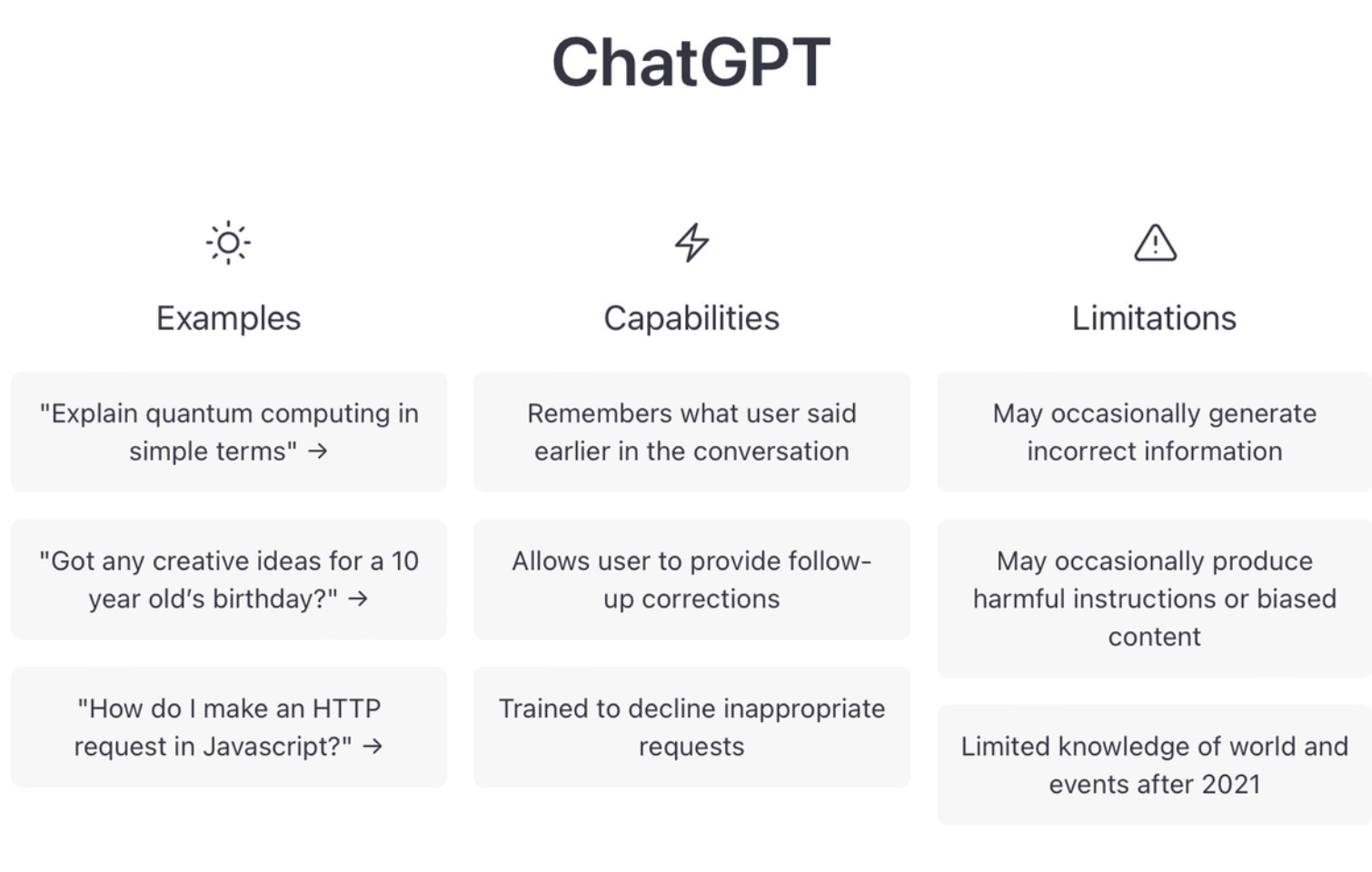
GPT-4, the most recent invention of the artificial intelligence lab OpenAI, is a more advanced version of ChatGPT. Compared to ChatGPT (GPT-3.5), GPT-4 boasts a humongous database, and thus offers faster speed and better performance. It's ten times more evolved than ChatGPT in three critical areas: creativity, visual input, and longer context. GPT-4 is better able to comprehend the context and recognize subtleties, producing results that are more accurate and coherent. However, to use GPT-4, you must sign up for ChatGPT Plus, a $20 monthly subscription that offers premium access to the site.
Key features of GPT-4:
Enhanced language understanding with the ability to differentiate subtle linguistic variations.
Generates top-notch text covering a wide range of topics.
Generates more cohesive and nuanced content.
Tackles intricate questions and tasks with greater accuracy.
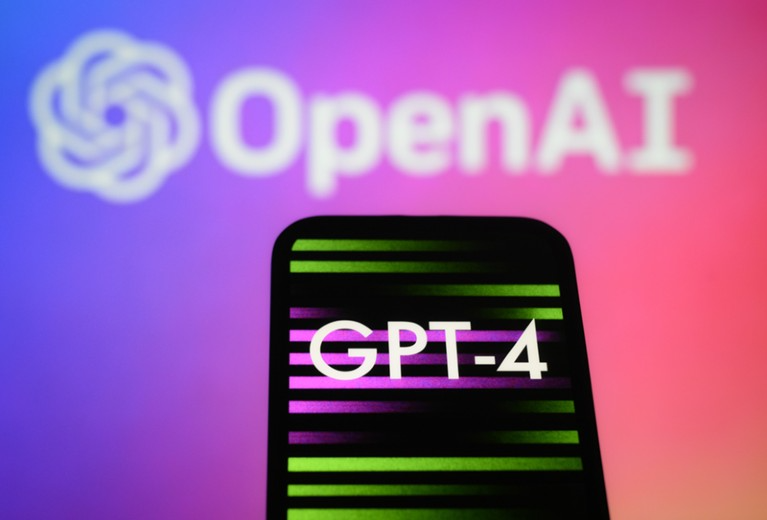
Midjourney is an AI image generator trained to generate new images. It allows users to generate unique artwork such as characters, images and depictions through text prompts or other pictures. It uses advanced algorithms and machine learning to create images that are more precise and consistent in terms of colour, composition, and style. Whether you're an artist, writer, or just someone with a creative mind, Midjourney opens up a world of possibilities for you to explore and find inspiration. Midjourney doesn't require any specific hardware or software for usage. However, having a Discord account is a prerequisite to access the service.
Key features of Midjourney:
Generate images from text descriptions, called “prompts”.
Generates high-quality images with high image resolution.
Generate images in a variety of artistic styles, including realistic, surreal, and abstract.

Stable Diffusion, created by Stability AI, is also an AI image generator. It is primarily used to generate intricate images based on textual descriptions. Additionally, it can be utilized for various tasks like inpainting, outpainting, and producing image-to-image translations guided by a text prompt. Stable Diffusion incorporates advanced algorithms and deep learning techniques, offering a fast and secure image generation process.
Key features of Stable Diffusion:
Supports both text-to-image and image-to-image transformations
Comes with a handy library of prompts to inspire your creations
Allows user-defined parameters for detailed image customization
Generate photorealistic images
Optimized for efficient performance on low-power computers.
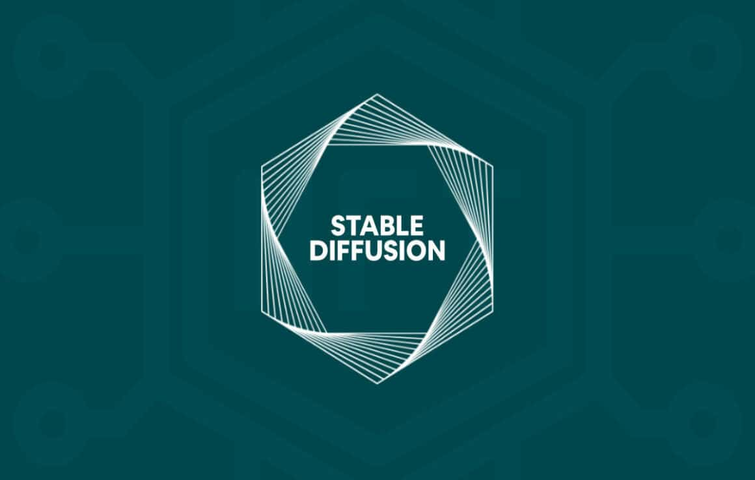
Dall-E2, a generative AI model created by OpenAI. , excels in image synthesis. It can produce incredibly realistic and detailed pictures based on textual descriptions by utilizing deep learning techniques. Dall-E2 was created by combining certain components of the GPT-3 LLM. It leverages 12 billion elements in an algorithm constituted for optimum image production.
Key features of Dall-E2:
Generative AI model specializing in image synthesis.
Transforms textual prompts into intricate visual content.
Accommodates a wide range of image styles and genres.
Offers control over image attributes like composition and lighting.
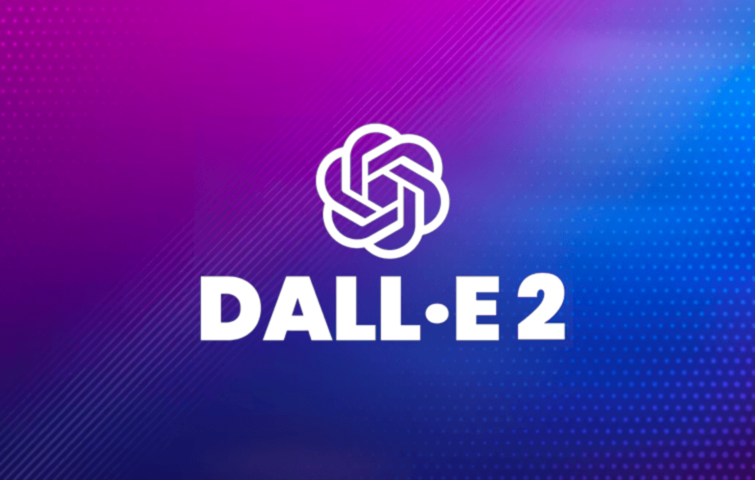
Claude is a AI assistant based on Anthropic’s research into training helpful and ethically responsible AI systems. It is capable of a wide variety of conversational and text processing tasks such as summarisation, search, creative and collaborative writing, Q&A and coding, while maintaining reliability and predictability.
Key features of Claude:
Providing thoughtful, relevant responses based on conversation history.
Displays multilingual proficiency, spanning common languages and programming languages.
Streamlines and automates complex workflows.
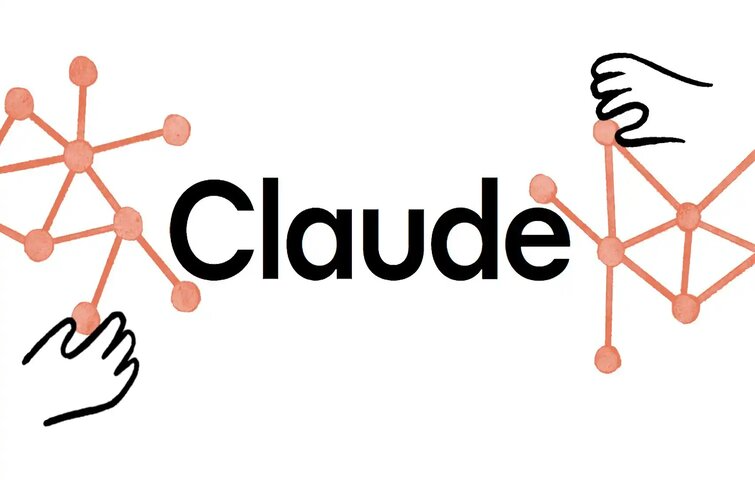
Duet AI is a powerful collaborator that seamlessly integrates with Google applications such as Gmail, Google Docs, and Google Meet. It can act as a coach, thought partner, source of inspiration, and productivity booster.
Key features of Duet AI:
Draft and refine emails in Gmail - even on the go.
Generate plans for any project in sheets.
Create original images from text, right within Slides.
Write and refine document drafts in Docs.
Foster more meaningful connections in Meet.
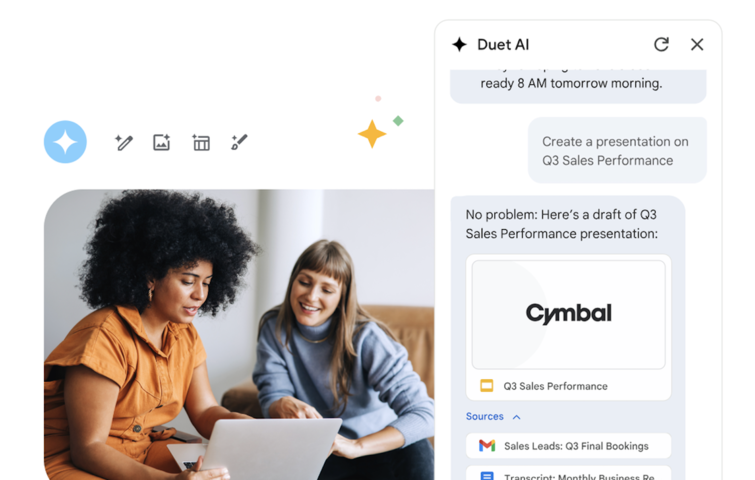
Bard is a powerful large language model (LLM) chatbot developed by Google AI. Powered by Google’s LLM, PaLM 2, Bard works to be more efficient and perform at a higher level. It can be used to learn, create and collaborate in new and innovative ways. It excels in answering questions, offering prompts on a range of different topics, and generating different forms of text-based content, such as poems, code, scripts, musical pieces, emails, or letters, as well as summaries text and translate between languages.
Key features of Bard:
Access and analyse data via Google Search.
Utilize the power of LaMDA, a robust transformer-based model.
Incorporates a user response rating mechanism.
Accessible via individual Google accounts.
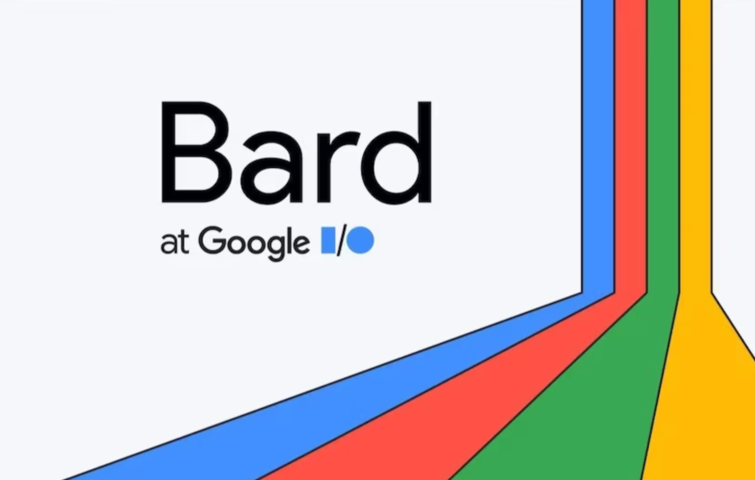
AlphaCode, an advanced AI system designed to assist programmers in writing efficient and high-quality code, uses deep learning to generate novel solutions to competitive programming problems. It excels in writing code, bug resolution, and suggesting optimal programming solutions. Developers embrace AlphaCode for hastened workflows, task automation, and language acquisition. It significantly enhances efficiency, curbing errors and fostering coding proficiency.
Key features of AlphaCode:
Supports various programming languages and paradigms.
Smart filtering after large-scale code generation.
Offers real-time code suggestions and bug fixes.
Provides code optimization solutions.
Assists in collaborative coding with shared suggestions.
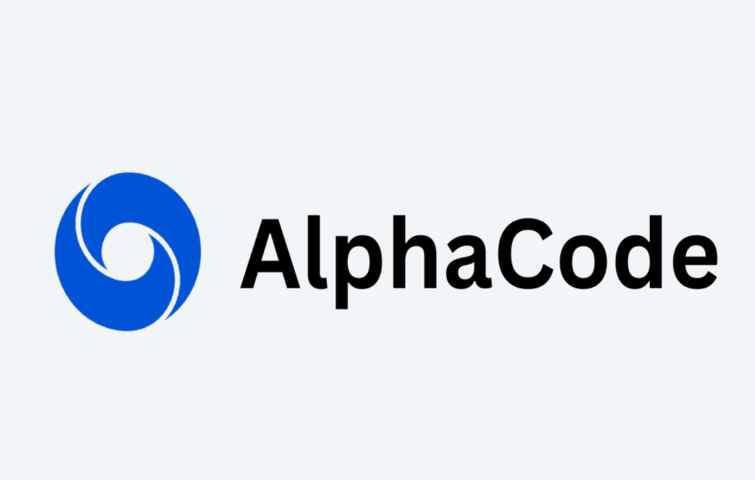
Synthesia is a synthetic media generation platform used to create AI generated video content using text inputs. It empowers users to make video content without cameras, microphones or studios. Based on advanced deep learning, it effortlessly transfers text into lifelike visuals, turning ideas into captivating visual experiences. It greatly revolutionizes the way of content creation, unlocking human creativity for positive impact.
Key features of Synthesia:
The AI-powered platform converts text to videos efficiently.
Creates dynamic visuals, avatars, and scenes.
Automated voice synthesis for seamless audio.
Users can tweak visuals, text, and voice style.
Rapidly produce multiple videos simultaneously
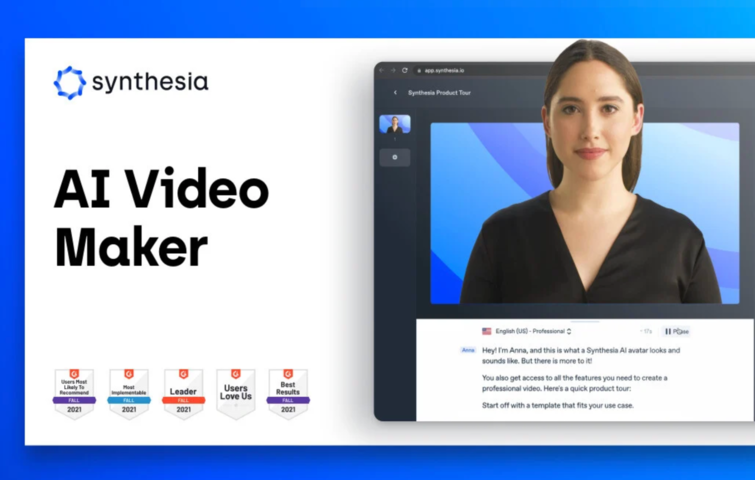
Cohere Generate is an AI-powered text generation tool developed by Cohere. It is designed to help users generate high-quality content for various applications, including product descriptions and marketing materials. . If you ask a question, it will generate an answer, which makes it the ideal model for summarization and building Chatbots.
Key features of Cohere Generate:
Tailored for diverse natural language generation tasks.
Creates interactive conversational agents with ease.
Delivers human-like responses for authentic interactions.
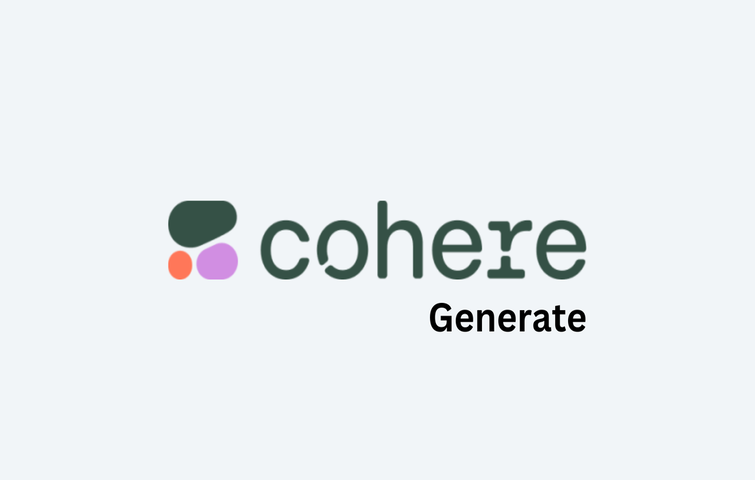
GitHub Copilot is a cloud-based AI tool developed by GitHub, OpenAI and Microsoft. It's a versatile tool, enabling faster coding, facilitating learning, and supporting various programming languages. It offers code snippets, explanations, and context-based guidance, enhancing developer productivity and learning.
Key features of GitHub Copilot:
Integrates with code editors like Visual Studio Code.
Generates code snippets, explanations, and contextual info for developers.
Offers quick, relevant suggestions for efficient code completion.
Supports multiple programming languages for diverse project needs.
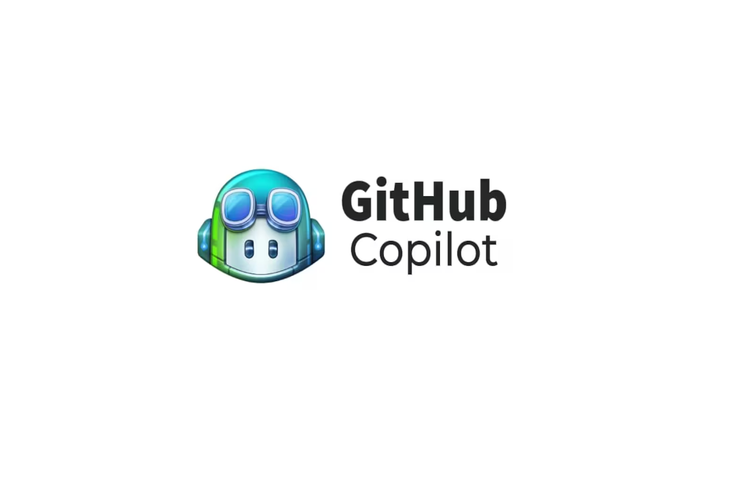
Icons8's Illustration Generator is a powerful AI tool for generating unique and consistent illustrations with ease. It stands out for its user-friendly interface, allowing users to generate art by entering simple prompts. This tool is ideal for projects requiring a coherent visual style across multiple images.
Additionally, the flexibility to adjust backgrounds and aspect ratios enhances its utility. It’s particularly useful for designers seeking quick, stylistically consistent illustrations without the need for manual drawing or extensive customization.
Key features of Illustration Generator:
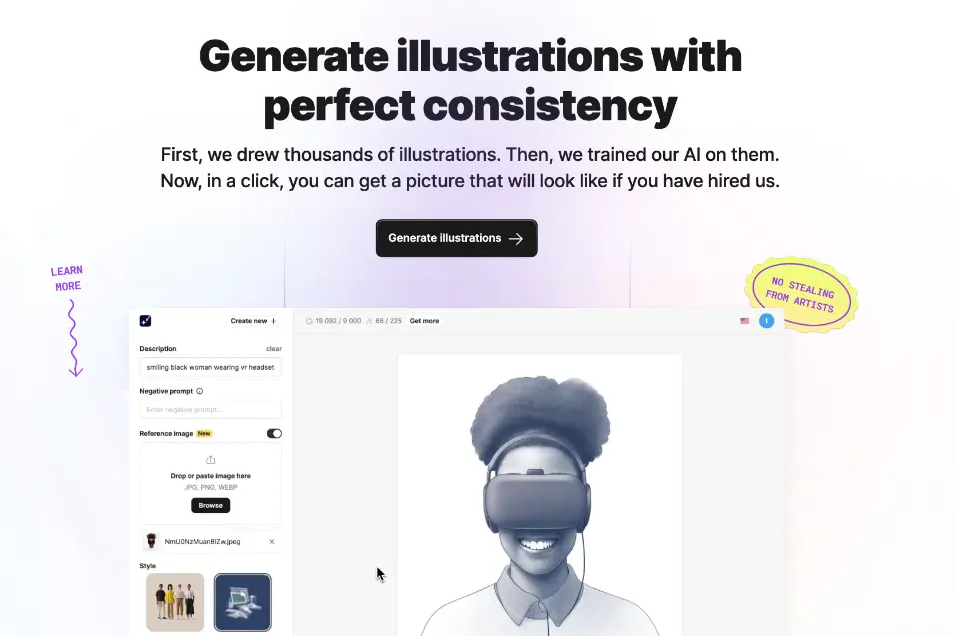
Descript is a video editing platform that utilizes artificial intelligence (AI) to make video editing faster and easier. It automates the transcription process, converting spoken words into accurate text. Moreover, with the ability to remove filler words, pauses, and even correct text from the transcript, Descript AI drastically reduces editing time.
Key features of Descript:
Automated transcriptions and ability to edit audio like text.
Text-based editing to edit audio and video like you would edit a word document.
Generate human-like speech with its AI voices to cut production time down significantly.
One-click tools to remove filler words and awkward silences.
Easily repurpose content for different formats and platforms.
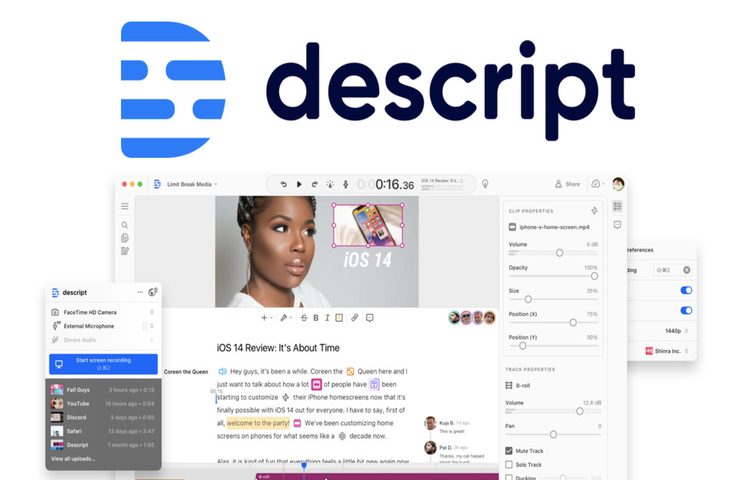 15.Bing AI - Copilot
15.Bing AI - CopilotAs we know, Bing is Microsoft’s search engine. But Microsoft has updated it with artificial intelligence (AI) technology powered by OpenAI’s GPT-4 model. It is like having a research assistant, personal planner, and creative partner at your side whenever you search the web. One of its main advantages is its capabilities as a search tool. It uses training data connected to the Internet, which means you can ask it questions about current events and news like a search engine.
Key features of Copilot:
Enhance search results with AI-Powered answers.
Search with images, text and voice.
Analyze a user’s search history to understand their interests and preferences
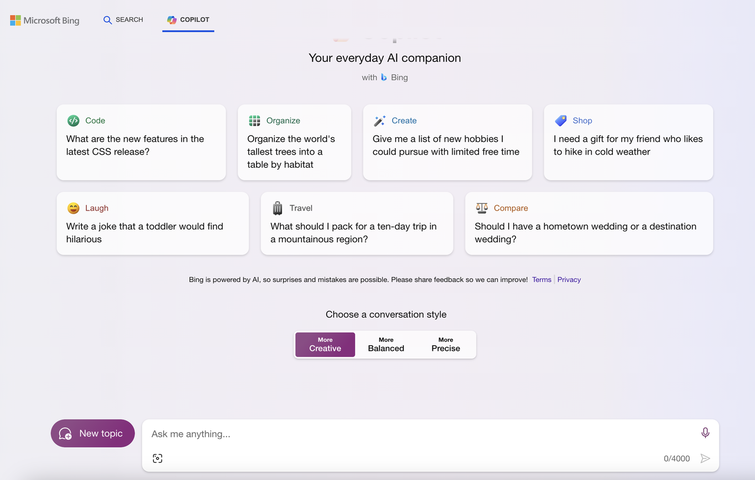
Notion is a digital all-in-one productivity tool that combines all the features of a notebook, organizer, project tracker, and more. In early 2023, Notion infused its popular web app with artificial intelligence (AI) to make itself even more functional. Notion AI features can help streamline your workflow by creating summaries, answering questions, and automating tedious tasks.
Key features of Nontion AI:
Adjust the tone of a document.
Create a concise summary of events after a long day of note-taking.
Make existing content longer or shorter
Turn summaries into action items.
Ask questions for quick and easy answers.
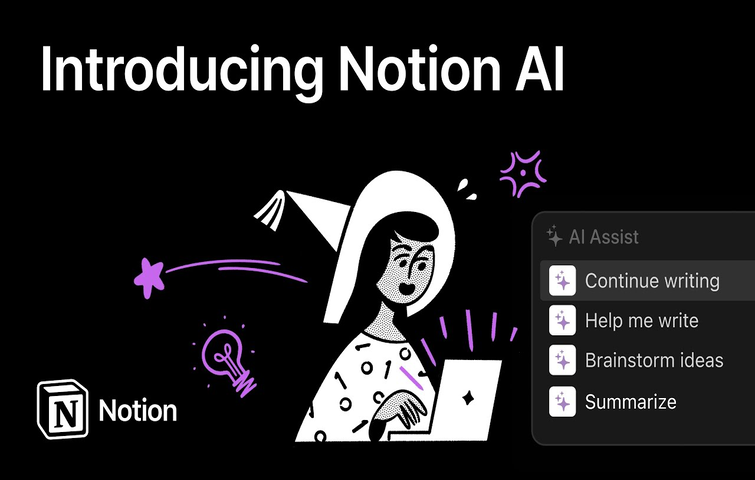
Designs.ai is a comprehensive AI design tool that can handle various content development tasks. It can be used for multiple purposes, such as producing voice-overs, videos, social media postings, and logos. Through creative automation powered by AI, it allows agencies and freelancers to focus their time on client engagement, ideation, and strategy. Scaling across channels also becomes much easier with quick turnaround and high-volume creation.
Key features of Designs.ai:
Maps facial features from a photo then blends them onto a target face in a video or photo of your choice.
Generate images with a variety of styles like fantasy, neon-punk, and more.
Generate a voiceover in 15+ global languages.
Create a range of marketing materials using basic points.
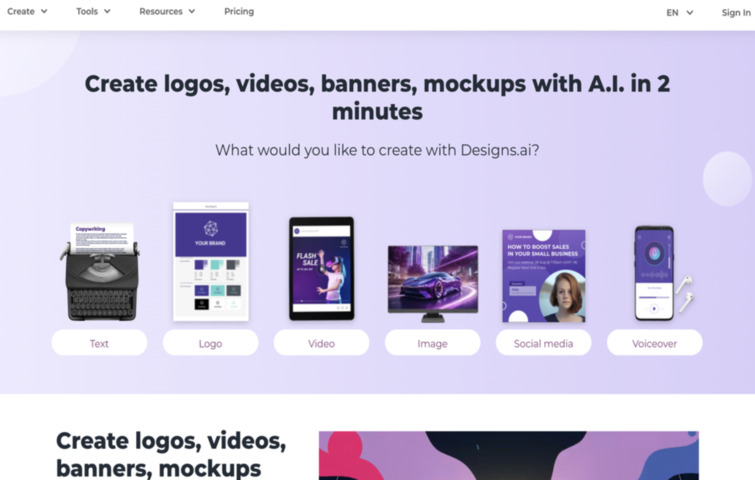
Scribe is an AI writing assistant which revolutionizes content creation. Its prowess in summarizing articles, crafting reports, and aiding academic writing is unparalleled. This tool empowers journalists, students, and professionals, streamlining research and writing. Scribe excels in tailored tasks, supercharging productivity, although intricate creative writing may demand human touch for precision.
Key features of Scribe:
Dedicated AI writing assistant.
Generates content in diverse styles and formats.
Summarizes articles, creates reports, and aids academic writing.
Assists in training and documentation.
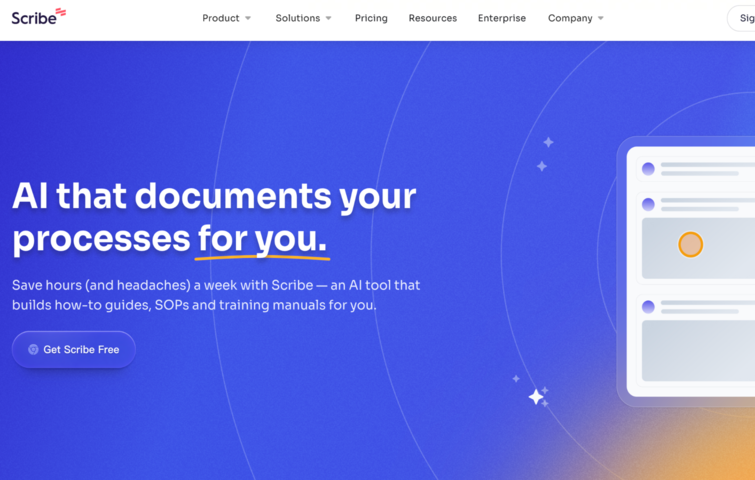
Rephrase.ai a AI-powered synthetic video creation platform that eliminates the complexity of video production, enabling users to create professional-looking videos with a digital avatar in minutes. It can take any piece of text and create a video of any person speaking that text. Rephrase.ai is great for HR to create training videos, personalizing sales videos and making characters speak in AR/ VR, giving a face to digital assistants.
Key features of Rephrase.ai:
Create realistic-looking AI-generated videos just by typing a video transcript.
Create quick and easy-to-make transparent AI-generated narrator videos using the API.
The Rephrase.ai API automates video creation at scale.
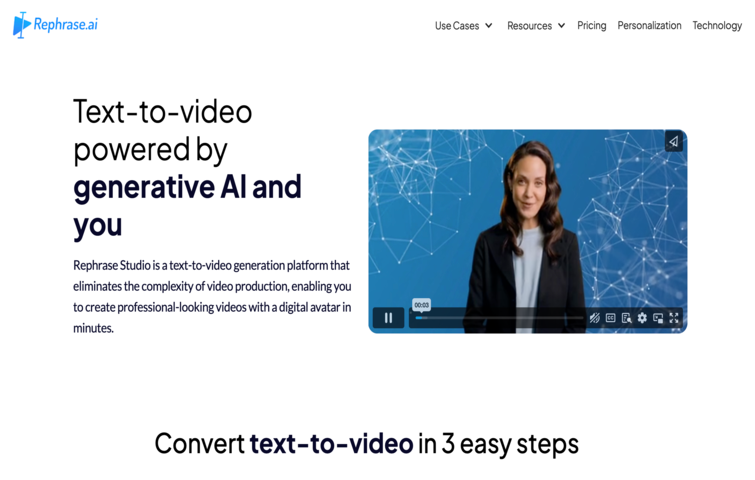
Jasper is the AI platform that helps businesses scale up marketing content like blog articles, social media posts, sales emails, website copy, and more. It helps creators use generative AI to break through writer’s block, create original imagery, and repackage content into different formats and languages in your company's brand voice by inputting basic information. .
Key features of Jasper:
Generate content that’s in the correct tone of voice after feeding the AI your content or style guide.
Generates on-brand content in 15 seconds or less.
Goes everywhere with browser extensions.
Enterprise-level security certifications.
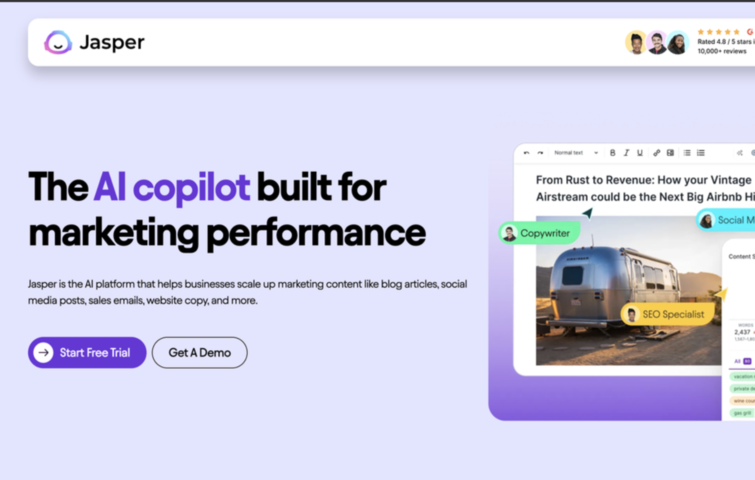
Serving as both a product and an embedded model within Adobe applications, Adobe Firefly has been designed to assist users in expanding upon their natural creativity. With Firefly, users can use simple text prompts to create the highest-quality output such as beautiful images, text effects, and fresh color palettes, or one can makes all-new content from reference images.
Key features of Adobe firefly:
Generate images from a detailed text description.
Generate images from the interactive positioning of 3D elements.
Move any object anywhere in your image.
Use a brush to remove objects or paint in new ones.
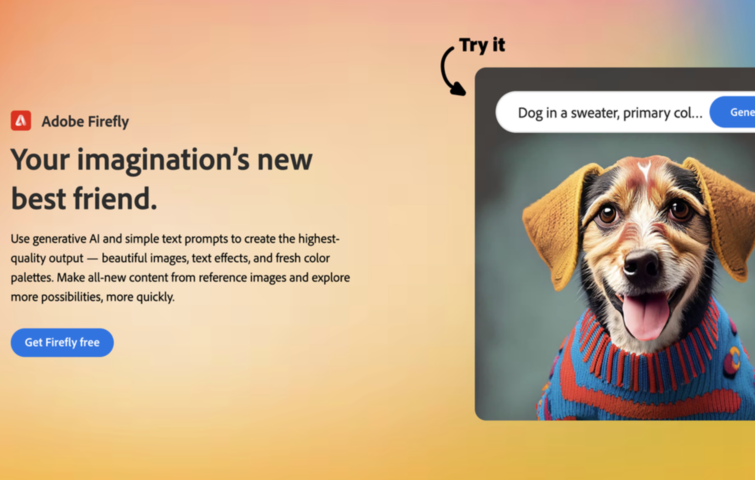
Artificial Intelligence (AI) is currently undergoing rapid development, showcasing its remarkable impact across various domains. Generative AI tools, powered by AI, have unquestionably revolutionized the way we work, create and communicate in many industries. It’s able to solve complex problems almost instantly. Equipped with generative AI tools, we generate sophisticated and personalized outputs smarter and way more efficiently.
Moreover, the continuous growth of AI is inevitable, especially as more companies embrace its potential and discover new applications integrated into everyday processes. According to an IBM study, 40% of workers are expected to undergo reskilling in the next three years due to the influence of AI. This also highlights the urgency for individuals to adapt and acquire new skills to thrive in an AI-driven future.
There are various generative AI tools available in the market nowadays. Basically, it can be divided into following types:
Text generation tools for stories, articles and dialogue.
Image generation tools for new and visually appealing images based on existing patterns or styles. (Similarly, AI video maker can analyze existing video footage or scripts to generate fresh and engaging visual content. )
Sound generation tools for melodies, harmonies and even entire compositions.
Video generation tools for creating or enhancing videos.
Coding creation for generating code snippets, explanations, and contextual info for developers.
Besides, AI is continuously evolving, which means there will inevitably be more types of generative AI tools available in the future.
When choosing a generative AI tool, here are some basic factors you should take into consideration:
Features: You should identify what type of tools you need first-whether you need a tool for creating a video or for writing an essay, and then accordingly choose the right tool with core features and capabilities that exactly meet your needs.
Cost: You should evaluate the costs associated with licensing, training, and maintaining the AI tool. Although many tools have free licenses, they have limited features.
Scalability: You should ensure the chosen AI tool can handle increasing workloads and adapt to future requirements. Assess whether it integrates seamlessly with existing infrastructure.
Overall, irrespective of your jobs or field, whether you are a youtuber, designer, developer or photographer, generative AI tools have the potential to enhance your productivity, stimulate creativity, and unlock new possibilities. Meanwhile, as it keeps growing rapidly, Generative AI is undoubtedly going to shake up traditional content production methods, but always be aware of AI plagiarism by using the AI detector tools. So let's embrace the power of AI together now.
 Mockplus RP
Mockplus RP
A free prototyping tool to create wireframes or interactive prototypes in minutes.
 Mockplus DT
Mockplus DT
A free UI design tool to design, animate, collaborate and handoff right in the browser.
